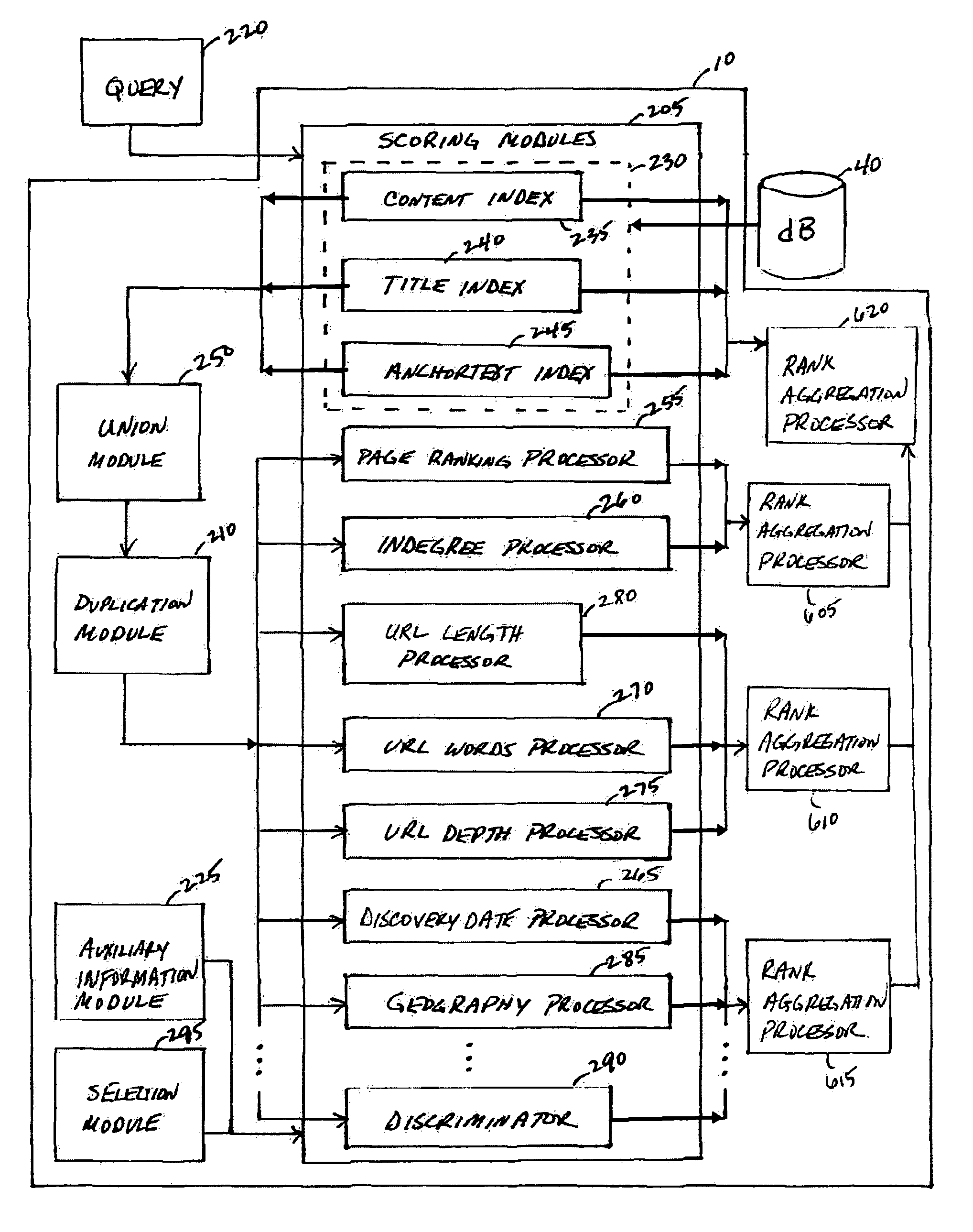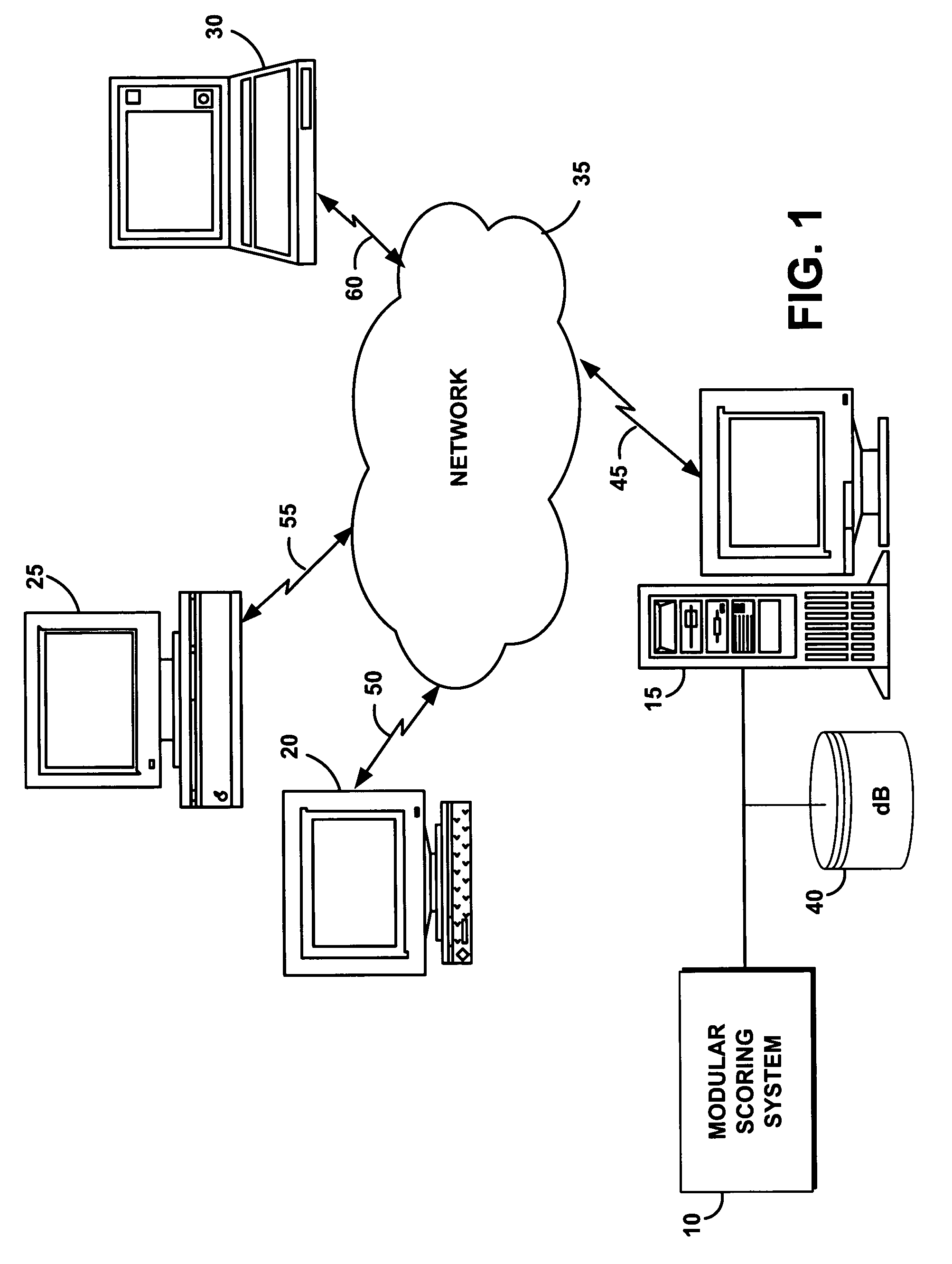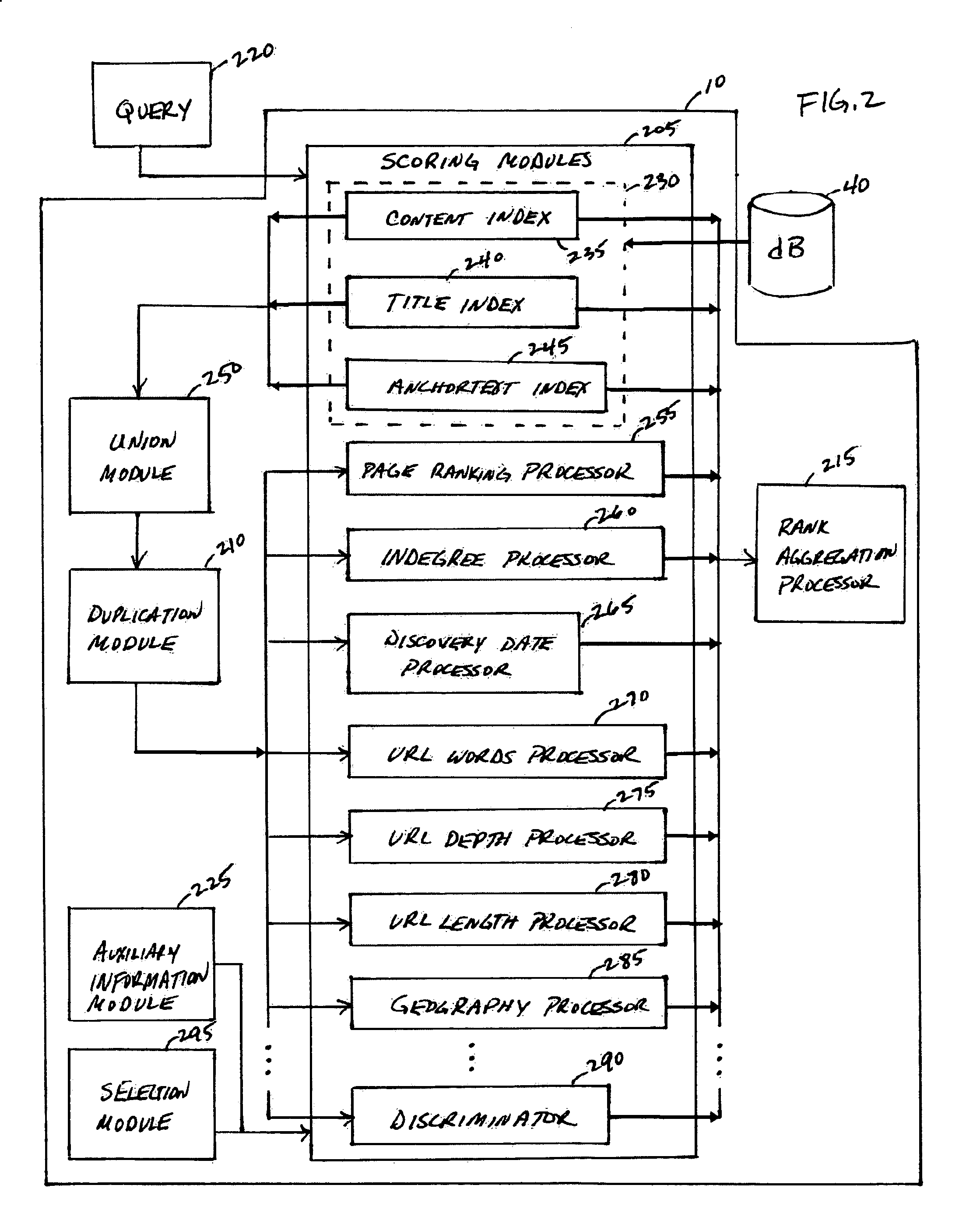System, method and service for ranking search results using a modular scoring system
a scoring system and search results technology, applied in the field of scoring or ranking documents, can solve problems such as too many, decision conflicting with good search, and diversification of ways
- Summary
- Abstract
- Description
- Claims
- Application Information
AI Technical Summary
Benefits of technology
Problems solved by technology
Method used
Image
Examples
Embodiment Construction
[0031]The following definitions and explanations provide background information pertaining to the technical field of the present invention, and are intended to facilitate the understanding of the present invention without limiting its scope:
[0032]Internet: A collection of interconnected public and private computer networks that are linked together with routers by a set of standards protocols to form a global, distributed network.
[0033]Inlink: Links coming into a web page or document such as an HTML document from another web page or document.
[0034]Intranet: A network that is internal to a company or organization that may not be connected to the Internet, but that uses standard Internet protocols and has some similar functions.
[0035]Link: A pointer in a web page or in a document such as an HTML document that leads to another web page or to another place within the same document; also called a hyperlink.
[0036]Rank: An index assigned to a document / web page having value 1 through the num...
PUM
 Login to View More
Login to View More Abstract
Description
Claims
Application Information
 Login to View More
Login to View More - R&D
- Intellectual Property
- Life Sciences
- Materials
- Tech Scout
- Unparalleled Data Quality
- Higher Quality Content
- 60% Fewer Hallucinations
Browse by: Latest US Patents, China's latest patents, Technical Efficacy Thesaurus, Application Domain, Technology Topic, Popular Technical Reports.
© 2025 PatSnap. All rights reserved.Legal|Privacy policy|Modern Slavery Act Transparency Statement|Sitemap|About US| Contact US: help@patsnap.com



